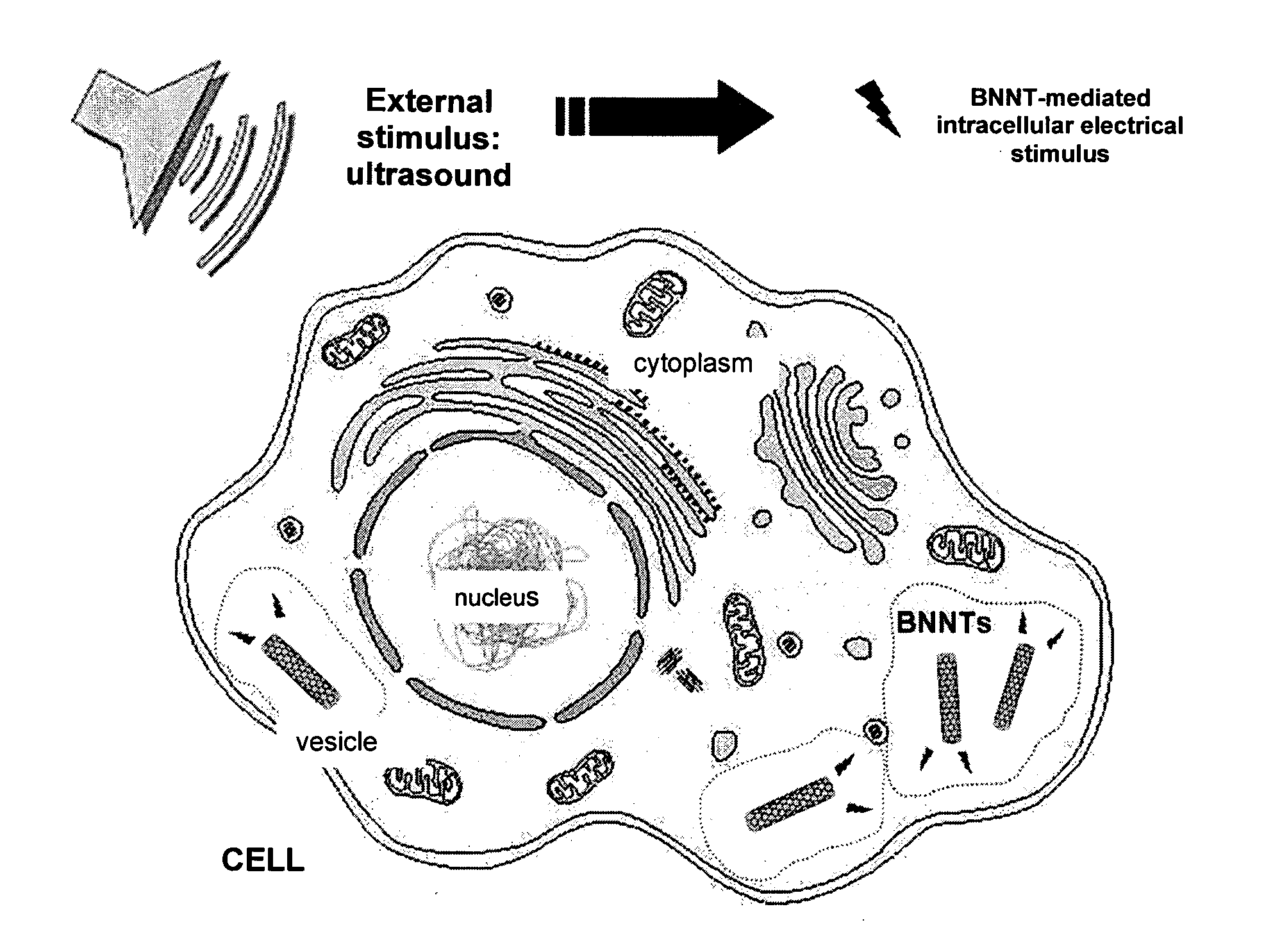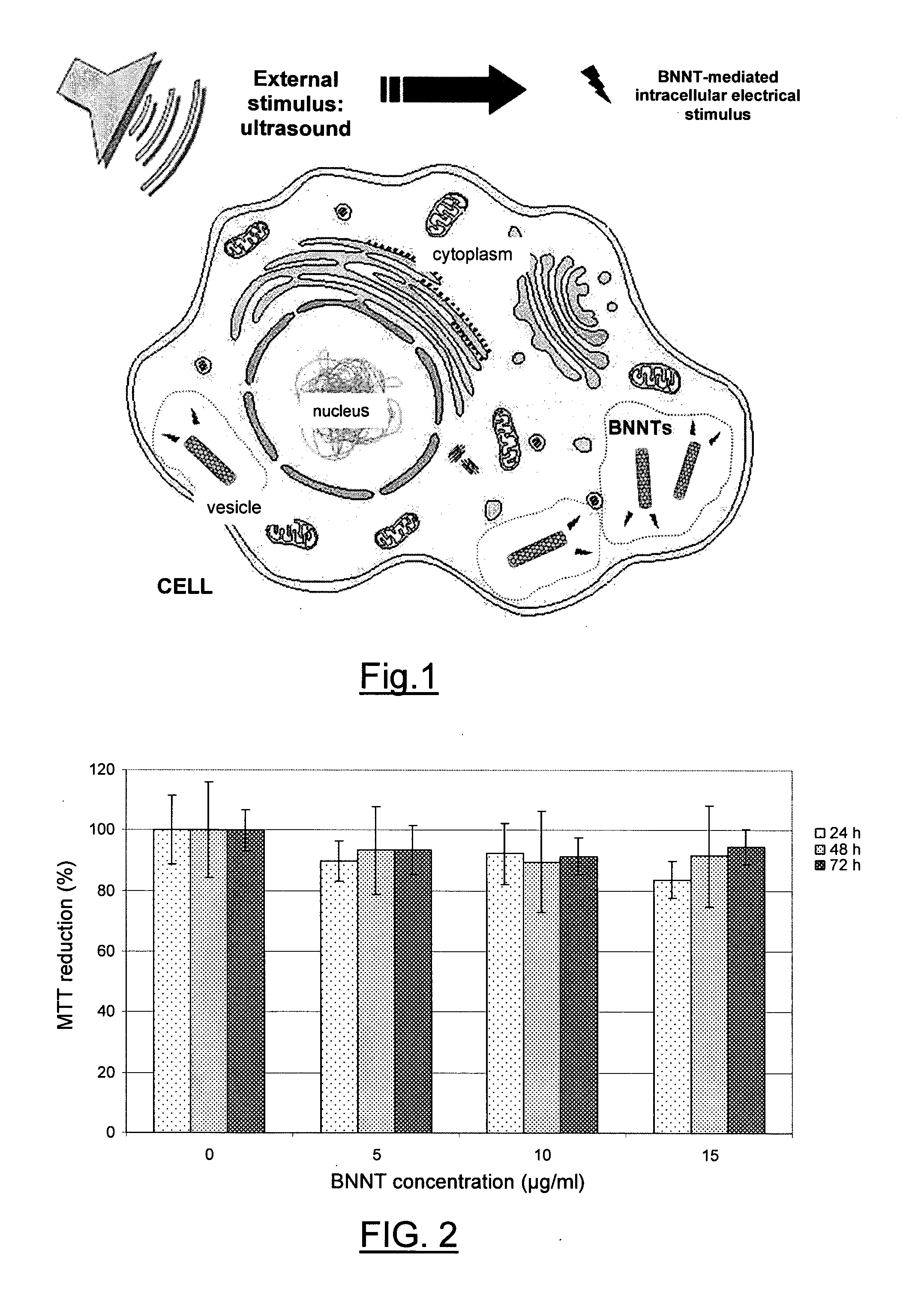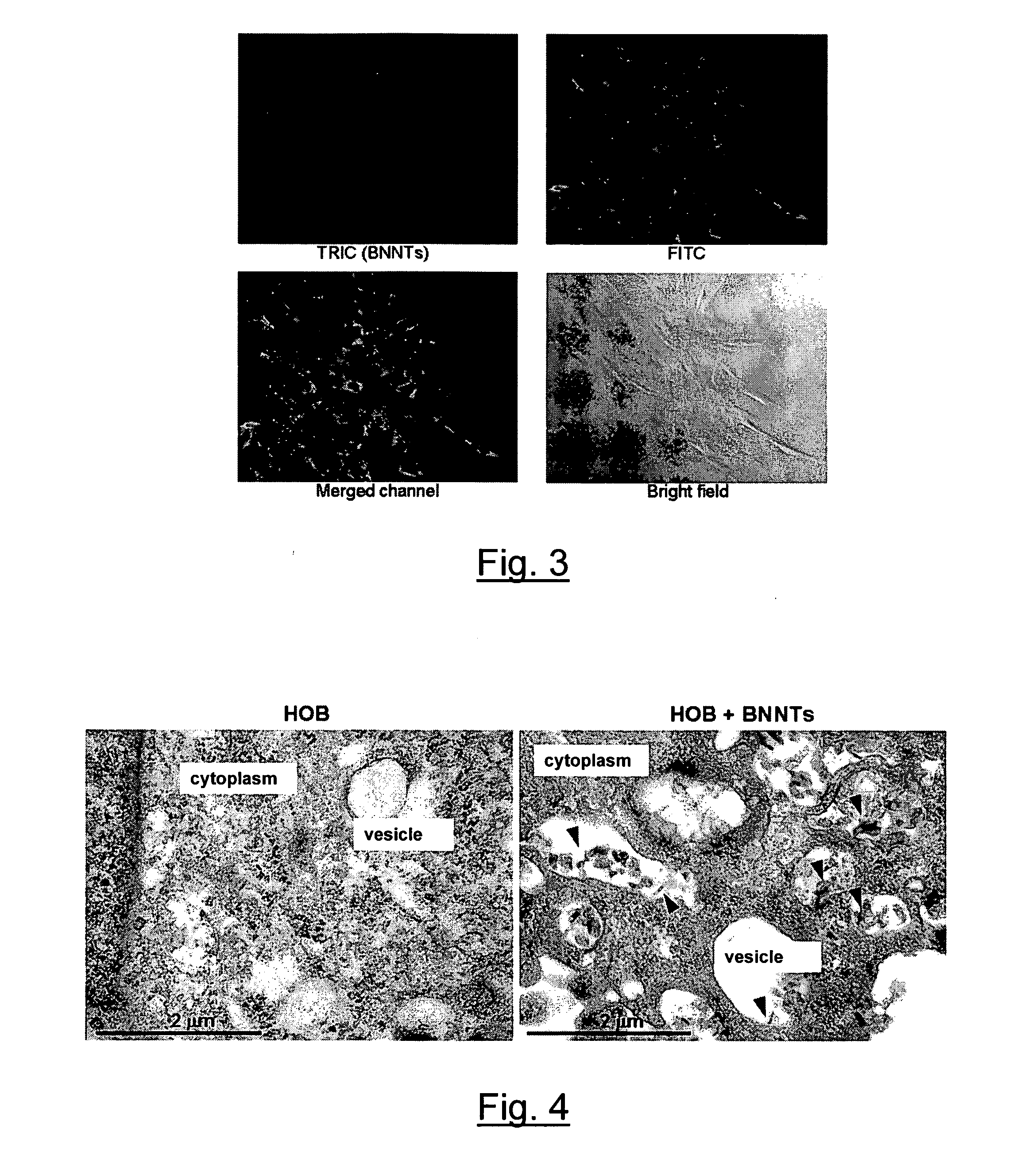Cellular electric stimulation mediated by piezoelectric nanotubes
a piezoelectric nanotube and cell technology, applied in the field of piezoelectric nanovectors, can solve the problems of patient's death, long-term disability, and high invasiveness of current electrical stimulation procedures, and achieve the effects of maximizing the effect of effective electrical stimulation, reducing the invasiveness of present-day procedures, and eliminating or drastically reducing adverse problems and side effects
- Summary
- Abstract
- Description
- Claims
- Application Information
AI Technical Summary
Benefits of technology
Problems solved by technology
Method used
Image
Examples
example 1
Human Osteoblasts (HOBs) Isolation and Expansion
[0089]Trabecular bone samples, removed from the femoral head of a patient undergoing femoral joint replacement surgery, were used after obtaining informed consent. Samples were sectioned, under sterile conditions, into smaller pieces. Thereafter, bone fragments were placed in a sterile saline supplemented with antibiotics and antimycotics and washed several times in order to remove fat, marrow, tissue residuals and blood cells. Isolation was performed in accordance to the established method (Di Silvio et al. Human cell culture. London (UK): Kluwer Academic Publishers; 2001. p. 221-241). Cell migration from native tissue was observed within 1-2 weeks, leading to formation of an osteoid layer in the neighbourhood of the explant. Cells were cultured in a culture medium (CM) containing: DMEM low glucose (Sigma-Aldrich, Milan, I), 10% FCS (Invitrogen), 10% L-glutamine (Sigma-Aldrich), HEPES (Sigma-Aldrich), non-essential amino acids (Sigma-...
example 2
BNNTs Preparation and Conjugation
[0090]BNNTs supplied by Australian National University, Canberra, Australia, were produced by using ball-milling and annealing method (Chen Y et al. (1999) Chemical Physics Letter 299, p. 260-264; Yu J et al. (2005) Chemistry of Materials 17, p. 5172-5176). Details relating to sample purity and composition (provided by the supplier) were: yield >80%, boron nitride >97 wt %, metallic catalysts (Fe and Cr) derived from the milling process ˜1.5 wt % and adsorbed O2 ˜1.5 wt %.
[0091]The polymer used for the aqueous suspension and dispersion of BNNTs was poly-L-lysine (PLL) obtained from Fluka (81339), molecular weight 70,000-150,000. All experiments were carried out in phosphate buffered solution (PBS) as described previously (Ciofani G. et al. (2008) Biotechnol. Bioeng. 101, p. 850-858). Briefly, samples of BNNT powder in a 0.1% PLL solution were ultrasonicated for 12 h with a Branson sonicator 2510 (Bransonic). The output power of the sonicator was set ...
example 3
MTT Assay
[0096]To evaluate cell viability, MTT (3-(4,5-dimethylthiazole-2-yl)-2,5-diphenyl tetrazolium bromide, M-2128 from Sigma) cell proliferation assays were carried out after 24, 48, and 72 h of incubation with PLL-BNNT modified media, which contained a final concentration of BNNTs equal to 5, 10 and 15 μg / ml. After trypsinization and cell counting with a Bürker chamber, HOBs were plated in 96-well plates. Once the adhesion was verified (after about 6 h from the seeding), cells were incubated with MTT 0.5 mg / ml for 2 h. Then, 100 μl of dimethyl sulfoxide (DMSO, Sigma) were added in each well and absorbance at 550 nm was measured with a VERSAMax microplate reader (Molecular Devices). A reference test (cells cultured in the absence of BNNTs) was carried out as control.
PUM
| Property | Measurement | Unit |
|---|---|---|
| Adhesion strength | aaaaa | aaaaa |
| Electric properties | aaaaa | aaaaa |
| Piezoelectricity | aaaaa | aaaaa |
Abstract
Description
Claims
Application Information
 Login to View More
Login to View More - R&D
- Intellectual Property
- Life Sciences
- Materials
- Tech Scout
- Unparalleled Data Quality
- Higher Quality Content
- 60% Fewer Hallucinations
Browse by: Latest US Patents, China's latest patents, Technical Efficacy Thesaurus, Application Domain, Technology Topic, Popular Technical Reports.
© 2025 PatSnap. All rights reserved.Legal|Privacy policy|Modern Slavery Act Transparency Statement|Sitemap|About US| Contact US: help@patsnap.com



